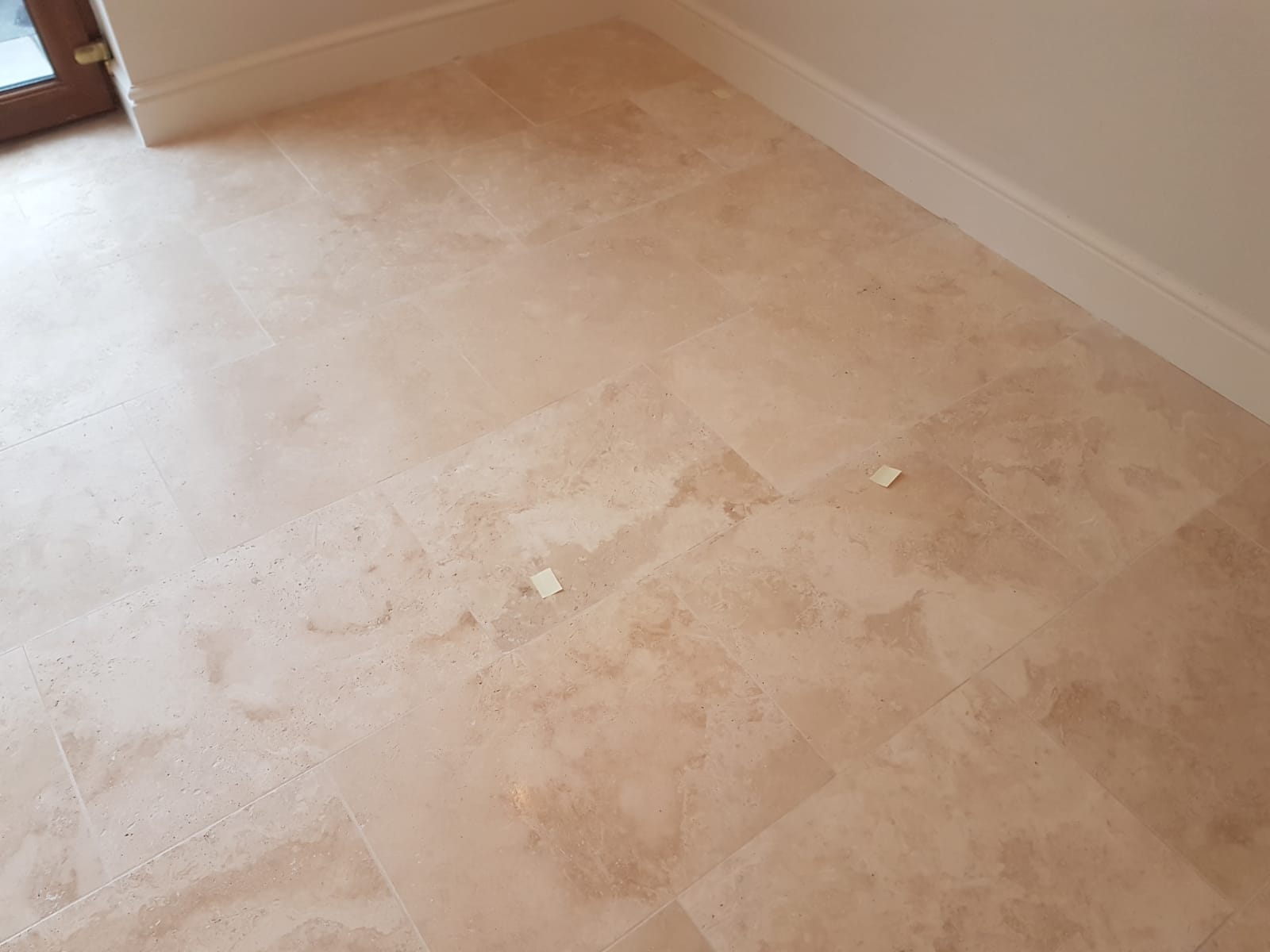Our client who lives in the beautiful Gower Peninsula was desperate to see if we could solve the problem of their poorly laid Travertine floor which had not been put down level. They didn’t want to remove all the tiles and have the floor re-laid, which would have been very messy, time consuming and most of all expensive so they contacted us looking for an alternative.
 |
 |
The floor had been laid some time ago so there was no way of going back to the original installers to correct the problem. Fortunately for the customer Tile Doctor has developed a method we call Milling which can grind the stone level and remove the lippage between tiles. I explained to them how we could carry out the job which involves the use of a series of coarse diamond encrusted pads to resurface the Travertine. Happy with our suggestion and the accompanying quote, we were commissioned to resolve the problem with the floor which was a trip hazard and scheduled our return for the following month.

Milling an Uneven Travertine Tiled Kitchen Floor
The first job was to identify the Travertine tiles which suffered the most lippage with sticky Post-it Notes and apply protective tape to the skirting and woodwork. Milling can generate dust, so we also fitted a dust sheet between the kitchen and the adjoining areas

We then made a start with the application of a very coarse 50-grit DRB (Diamond Router Bit) pad fitted to a weighted floor machine. The pad is applied with water to lubricate the process and minimise dust and run over the problem tiles. This pad removes the lippage and also mills the tile and surrounding tiles leaving them flat with one another.
The floor was then rinsed with water and the slurry extracted with a commercial wet vacuum before repeating the process with 100 & 200 grit DRB pads in sequence. These finer pads gradually remove the abrasive scratches from the tiles caused by the milling.
After rinsing and extracting between each pad the work continued with a 200, 400, 800 and finally a 1500-grit burnishing pads using the same method as before until the surface was restored and left with a semi sheen lustre finish.
By the end of the day the surface of the floor was vastly improved, the lippage was gone, and the Travertine looked much cleaner and brighter. The floor was a little damp from the rinsing and was left to dry off overnight.
Sealing a Travertine Tiled Kitchen Floor
The next day the floor was checked for moisture using a damp meter and the readings came back fine giving us the green light to finish the floor with the application of a sealer.
Tile Doctor Ultra Seal was chosen to seal the floor, it’s an impregnating sealer which works by seeping into the pores of the stone preventing dirt becoming ingrained there and providing long lasting protection. Additionally, Ultra Seal is recommended for food preparation areas such as Kitchens and it doesn’t affect the look of the stone once it dries leaving a no-sheen, natural look

Hopefully you can appreciate the improvement in the floor which was now level with no trip hazards and protected with a sealer so it will keep its looks for a look for many years to come and be much easier to keep clean.
My client was very happy with the results and left the following feedback:
“Adrian did a superb job on a badly laid travertine tiled floor, levelling and polishing it to perfection. We’d thoroughly recommend Adrian and will be calling him back soon to renovate our other tiled floors.”

For aftercare I recommended the use of Tile Doctor Stone Soap Cleaner which will help them maintain the floor and won’t prematurely erode the newly applied sealer.
Source: Travertine Floor Cleaning and Renovation Service in Gower Peninsula, Swansea
Tile Doctors operate throughout the UK and are able to help resolve any problem you have with your Tile, Stone or Grout, Internal or External. Call us today on 0345 512 0122 and ask us to help you with your problem large or small.